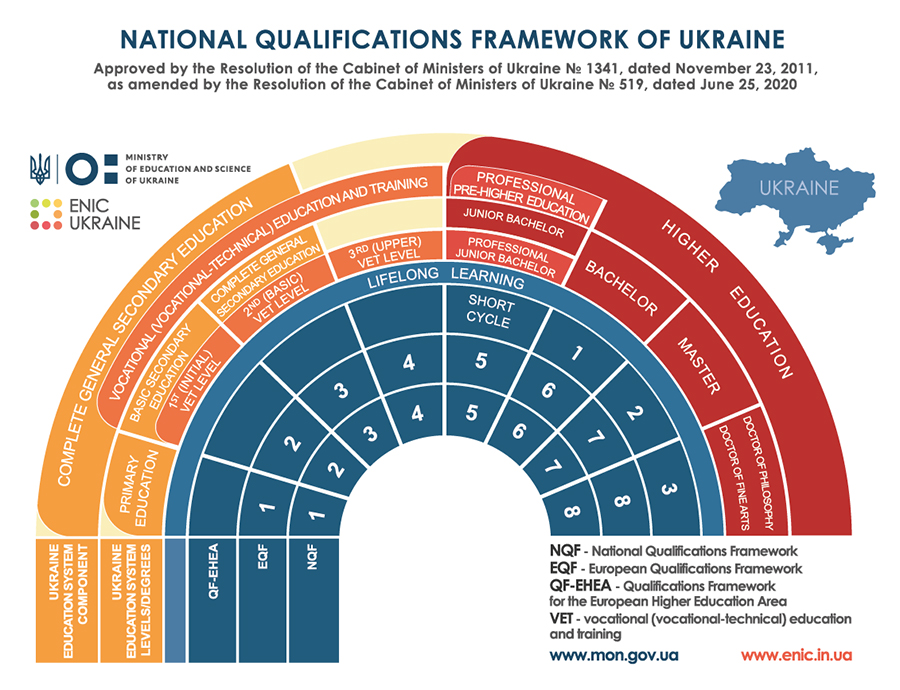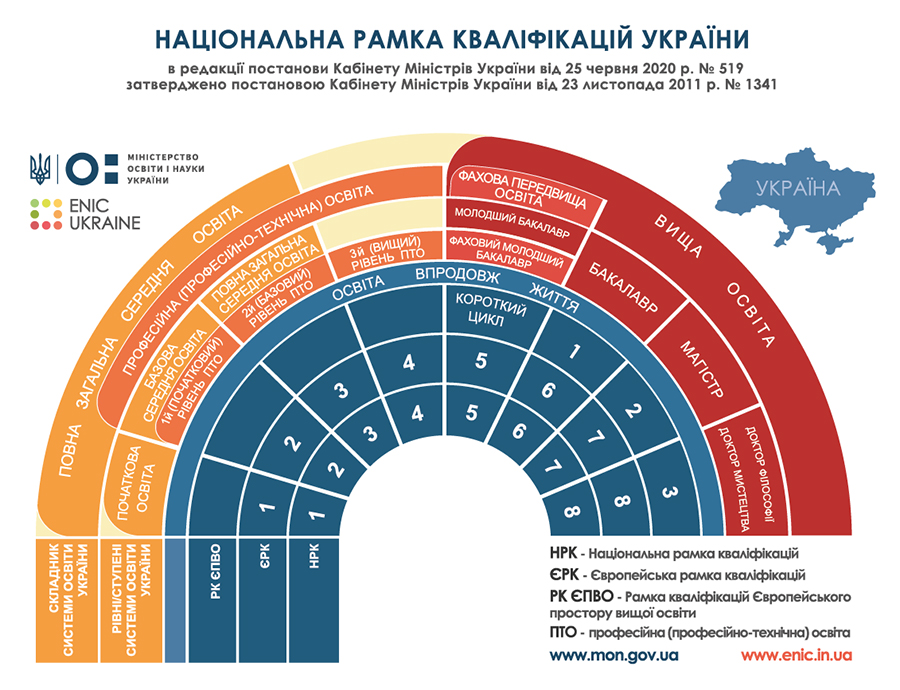Путь на сайте
NATIONAL QUALIFICATIONS FRAMEWORK
- Details
- Category: Без категории
- Published on Monday, 22 February 2021 09:18
- Written by Макаревич Евгения
- Hits: 39125

Resolution of the Cabinet of Ministers of Ukraine № 1341, dated November 23, 2011>>
НАЦИОНАЛЬНАЯ РАМКА КВАЛИФИКАЦИЙ
- Details
- Category: Без категории
- Published on Friday, 19 February 2021 10:44
- Written by Макаревич Евгения
- Hits: 22036
Постановление КМУ № 1341 «Об утверждении Национальной рамки квалификаций» от 23 ноября 2011
Useful Links
- Details
- Category: Без категории
- Published on Monday, 25 November 2019 16:56
- Written by Макаревич Евгения
- Hits: 13180
Ministry of Education and Science of Ukraine
The Unified State Electronic Database on Education
State Enterprise "Ukrainian State Centre for International Education"
National Agency for Higher Education Quality Assurance (NAQA)
The page of Ukraine on the EHEA (European Higher Education Area) website
НАЦІОНАЛЬНА РАМКА КВАЛІФІКАЦІЙ
- Details
- Category: Без категории
- Published on Thursday, 18 February 2021 08:07
- Written by Super User
- Hits: 42711

Постанова КМУ № 1341 «Про затвердження Національної рамки кваліфікацій» від 23 листопада 2011>>
Полезные ссылки
- Details
- Category: Без категории
- Published on Monday, 25 November 2019 11:10
- Written by Макаревич Евгения
- Hits: 138942
Министерство образования и науки Украины
Единая государственная электронная база по вопросам образования
Украинский государственный центр международного образования
Национальное агентство по обеспечению качества высшего образования
More Articles...
- SERVICES AND CONTACT INFORMATION
- Description of Documents on Higher Education (Research Degrees), Supplements thereto, Academic Transcripts of State Standard
- Швеция приглашает на конференцию 12-13 июня 2017 г.
- EDUCATIONAL DOCUMENTS IN UKRAINE
- ДОКУМЕНТЫ О ПОСЛЕДИПЛОМНОМ ОБРАЗОВАНИИ
- Описание документов о высшем образовании (научные степени) государственного образца и приложений к ним, академической справки
- ДОКУМЕНТЫ О СРЕДНЕМ ОБРАЗОВАНИИ
- Documents on Basic Secondary Education
- Transcript of records
- Diploma supplement
- Supplement
- Foreign students’ diploma
- PhD and candidate of sciences diploma
- Master diploma
- Specialist diploma
- Bachelor diploma
- Qualified Worker’s Diploma
- Junior specialist diploma
- Documents on Completed Secondary Education
- EDUCATION SYSTEM





